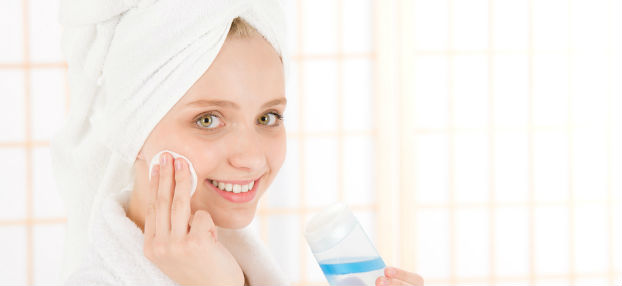Acne rosacea – or simply just „rosacea“ – is an „adult type“ of acne which can sometimes be persistent. This year, a new treatment has been approved in Europe giving hope for many sufferers of rosacea.
- Is this treatment really new?
- What does it do?
- How safe is it?
Dermatologist Dr. Okamoto informs about a new drug against acne rosacea
Is this method really new?
Even though the compound brimonidintartrate is not new, its application against facial erythema is. Brimonidin is a so called adrenergic receptor agonist (or more precisely an alpha2 adrenergic receptor agonist) and leads to contractions of the small blood vessels. So far it has been used as eye drops for glaucoma.
What does this treatment achieve?
This new gel (Mirvaso®) promises an improvement of facial redness of rosacea. Rosacea is a type of acne which typically affects adults rather than teenagers. Patients with rosacea are therefore typically older than patients with common acne vulgaris.
By contraction of the blood vessels, a reduction of redness can be achieved. Consequently, rosacea improves. Studies have shown a maximum efficacy already 3 to 6 hours after application of the gel. About 30% of the patients have realized an improvement compared to 10% of the placebo group. Participants of both groups were not informed whether they were using the new drug or the placebo (fake drug).
How safe is it?
Common adverse events (described by 1-3% of the participants) were reddening (erythema, flushing), itch and burning sensation of the skin. An abortion of the treatment was generally not required.
Occasionally, hot flash, headache, paresthesia, swelling of the eyelids, congested nose and dryness of the mouth have been reported.
No data is available for the use during pregnancy, breastfeeding, or patients with renal or liver failure.
The use for children under the age of 2 years and for patients with depression, severe heart or vascular diseases is not recommended. Please avoid the application near the eyes. Also the use on irritated skin or wounds or in case of intolerance should be avoided.
Summary
This seems to be a new and promising alternative in patients with rosacea. Particularly for patients who have undergone diverse treatments before, this new gel could be a promising treatment option. Whether this new drug will be helpful, and whether this effect is sustainable, can only be evaluated individually.
Declaration of conflict of interest
There is no conflict of interest to declare. Neither Dr. Okamoto nor members of his office has contributed nor been sponsored by any companies. This article has not received any funding of any party and reflects the intention to inform readers from a dermatologist’s point of view. As an associate professor at the Department of Dermatology of the Medical University of Vienna (MUV), Dr. Okamoto is merely on the payroll of the MUV.

